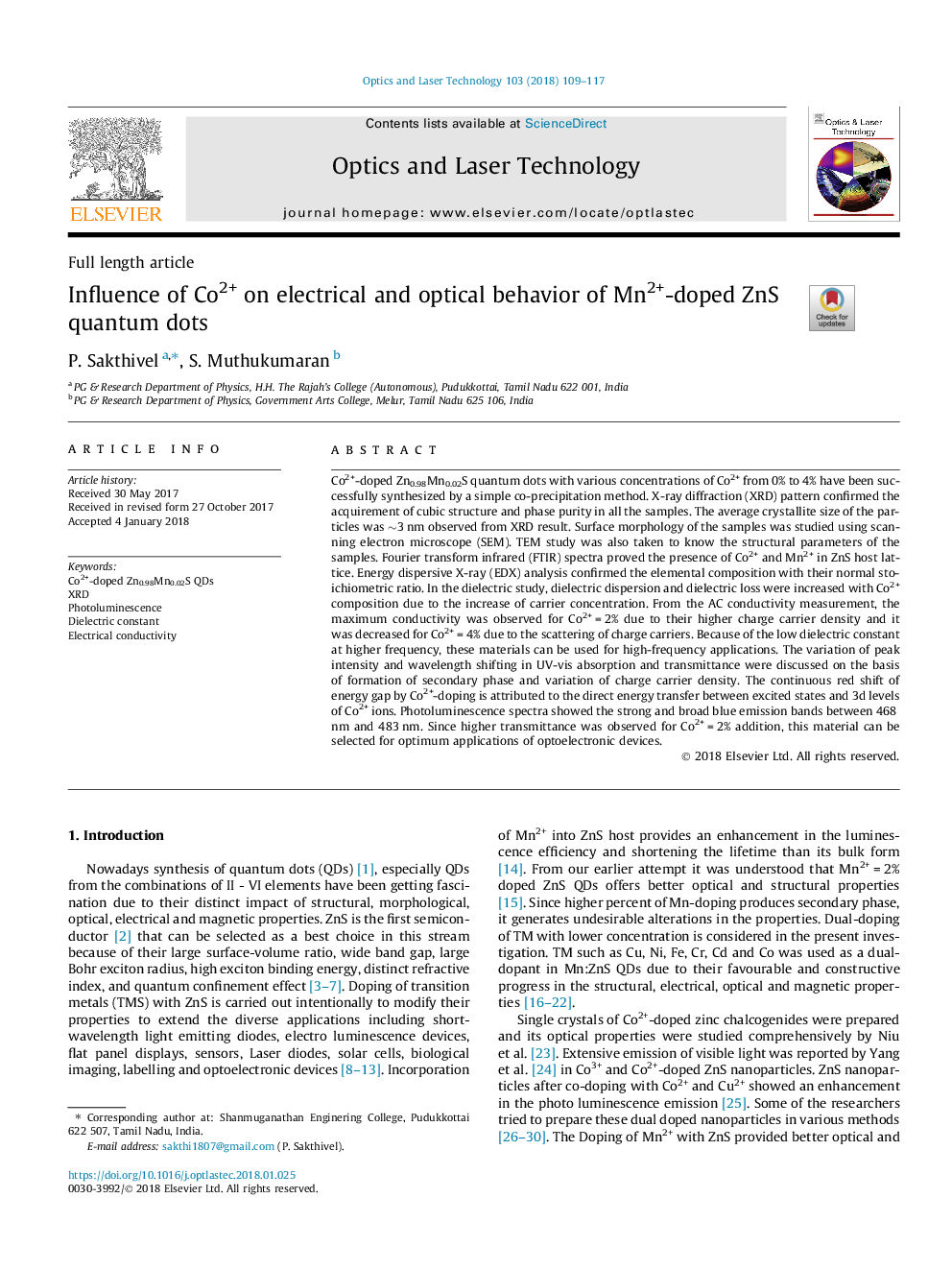| Article ID | Journal | Published Year | Pages | File Type |
|---|---|---|---|---|
| 7128945 | Optics & Laser Technology | 2018 | 9 Pages |
Abstract
Co2+-doped Zn0.98Mn0.02S quantum dots with various concentrations of Co2+ from 0% to 4% have been successfully synthesized by a simple co-precipitation method. X-ray diffraction (XRD) pattern confirmed the acquirement of cubic structure and phase purity in all the samples. The average crystallite size of the particles was â¼3â¯nm observed from XRD result. Surface morphology of the samples was studied using scanning electron microscope (SEM). TEM study was also taken to know the structural parameters of the samples. Fourier transform infrared (FTIR) spectra proved the presence of Co2+ and Mn2+ in ZnS host lattice. Energy dispersive X-ray (EDX) analysis confirmed the elemental composition with their normal stoichiometric ratio. In the dielectric study, dielectric dispersion and dielectric loss were increased with Co2+ composition due to the increase of carrier concentration. From the AC conductivity measurement, the maximum conductivity was observed for Co2+â¯=â¯2% due to their higher charge carrier density and it was decreased for Co2+â¯=â¯4% due to the scattering of charge carriers. Because of the low dielectric constant at higher frequency, these materials can be used for high-frequency applications. The variation of peak intensity and wavelength shifting in UV-vis absorption and transmittance were discussed on the basis of formation of secondary phase and variation of charge carrier density. The continuous red shift of energy gap by Co2+-doping is attributed to the direct energy transfer between excited states and 3d levels of Co2+ ions. Photoluminescence spectra showed the strong and broad blue emission bands between 468â¯nm and 483â¯nm. Since higher transmittance was observed for Co2+â¯=â¯2% addition, this material can be selected for optimum applications of optoelectronic devices.
Related Topics
Physical Sciences and Engineering
Engineering
Electrical and Electronic Engineering
Authors
P. Sakthivel, S. Muthukumaran,
